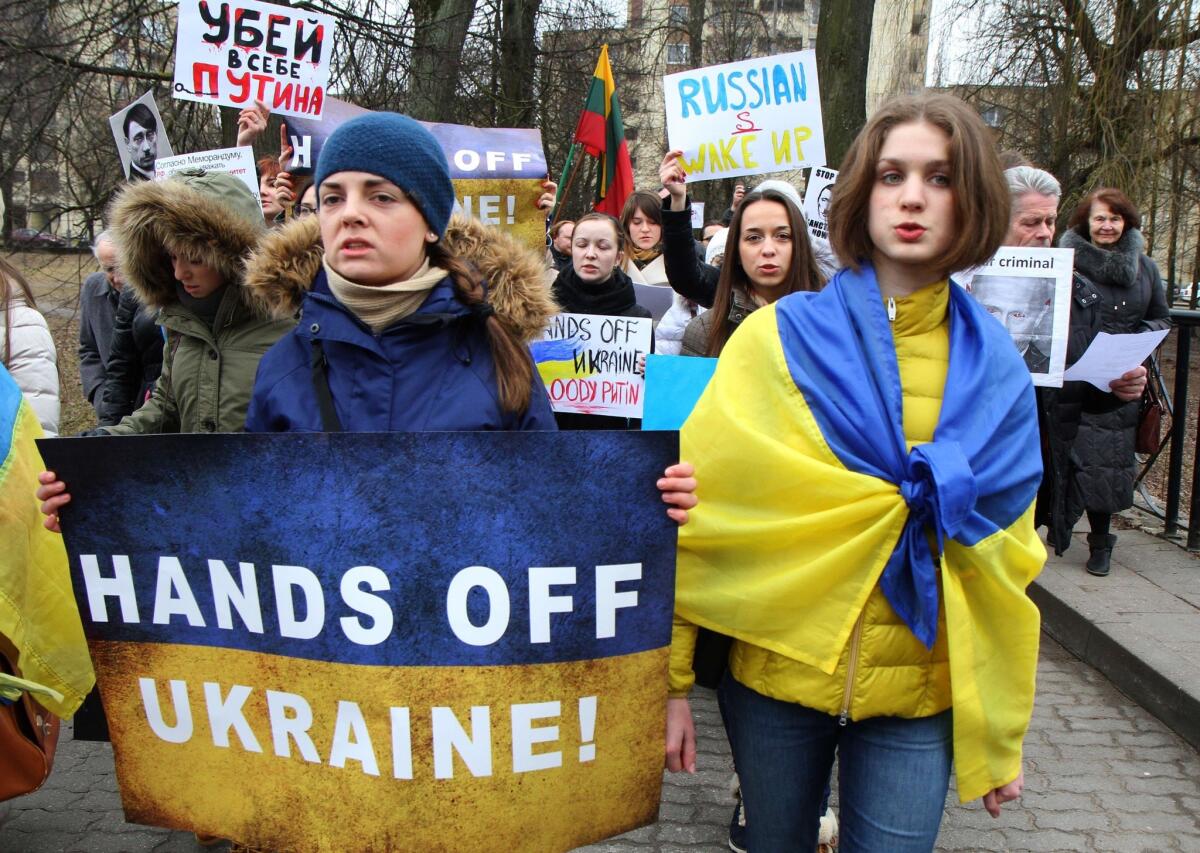What’s behind Russia’s moves in Ukraine? Fear of NATO

- Share via
The causes of the unfolding crisis in Ukraine are many, but most fundamentally its roots can be found in an enormously consequential decision made by the United States and its allies in the early 1990s. Faced with a strategic challenge of constructing a new security architecture for post-Cold War Europe, the decision was made to embark on a program of gradual NATO expansion to the east.
A first round of accession took place in 1999, with membership for the Czech Republic, Hungary and Poland. That was followed in 2004 by membership for Bulgaria, Estonia, Latvia, Lithuania, Romania, Slovakia and Slovenia, and in 2009 by membership for Albania and Croatia.
Officially, NATO’s position is that any country that wishes to join the alliance and meets its accession criteria will be welcomed. In practice, however, there was never any serious prospect that Russia would be allowed to join. Indeed, for many of NATO’s new members, the primary incentive to join was to deter aggression by, and deflect pressure from, Moscow.
PHOTOS: Deadly clashes in Kiev
Accordingly, Russians concluded that NATO expansion was directed first and foremost at containing Russia militarily and politically, and Moscow has been unambiguously and passionately opposed to the process since its inception. Today, the Russian political elite is virtually unanimous in viewing NATO expansion as an acute threat to Russian national security.
It likewise views eastern enlargement of the European Union as a first step toward full incorporation into Western institutions, including NATO — hence, Moscow’s intense opposition to Ukraine signing an EU association agreement in November.
There can be no doubt that NATO expansion has brought many benefits to the alliance’s new member-states. But it has also contributed greatly to the acute geopolitical struggle between Russia and the West that has now come to a head over Ukraine.
PHOTOS: A peek inside 5 doomed dictators’ opulent lifestyles
The fundamental problem with the project from the beginning was that, at some point, it would inevitably run up against the countervailing power of Russia. We reached that point initially in 2008, when NATO officials indicated at a NATO summit in April that Ukraine and Georgia would soon be offered membership plans, a decision that helped precipitate the brief war between Russia and Georgia that August. We have reached it again, with far more at stake, today in Ukraine.
For now, the immediate task is to try to defuse the crisis through active diplomacy. Although it is appropriate to warn Moscow about the dire political and economic consequences of further military intervention, as President Obama did Friday, it is also incumbent on Western governments to warn the new leadership in Kiev that it would be reckless to provoke Russia further or to ignore Russian interests.
The stark fact is that even if Russian military intervention stops with the establishment of a pro-Russian vassal state in Crimea, Russia will have enormous leverage over the new government in Ukraine. It can cut back on crucial gas deliveries, raise the price of gas and other commodities it is selling to an economically prostrate Ukraine, impose painful tariff and nontariff barriers on trade, and, above all, it can stir up endless trouble for Kiev, not just in Crimea but also in other Russian-speaking regions of the country.
In the longer term, the crisis in Ukraine suggests that it is time to reconsider NATO expansion and to explore alternative institutional arrangements for European security in the 21st century. Ukraine, for example, would be much better served by a NATO-Russian-Ukrainian treaty that provided for its military neutrality and some kind of a common customs regime for trade with the EU and Russia (or a Russian-led customs union). It is in no one’s interest, least of all Ukraine’s, to see a continuation of the dogfight between Russia and the West over Ukraine’s external orientation.
More ambitiously, an effort could be made to reinvigorate the security architecture constructed in the 1970s to reduce East-West tensions during the Cold War, notably the Organization for Security and Cooperation in Europe, which includes all NATO members, all former Warsaw Pact countries and all 15 Soviet successor states in its membership.
A renewed commitment to conventional force limitation, confidence-building measures and military transparency — using the OSCE as the institutional focus — along with some kind of institutionalized neutrality for Ukraine might produce an international environment that helps rather than undermines Ukrainian political and economic stabilization. It might even contribute to gradual liberalization in Russia as well.
Edward W. Walker is an adjunct associate professor of political science and executive director of the Berkeley Program in Eurasian and East European Studies at UC Berkeley. He is the author of “Dissolution: Sovereignty and the Breakup of the USSR.”
More to Read
A cure for the common opinion
Get thought-provoking perspectives with our weekly newsletter.
You may occasionally receive promotional content from the Los Angeles Times.










